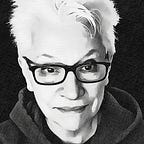The Legacy of King Kong (1933): When a Giant Ape Roared into Cinema History
Note: When October’s chill sets in, it beckons memories of even more chilling horror films. Topping my all-time favorite list? King Kong (1933)
In 1933, a colossal gorilla clambered up the Empire State Building, forever imprinting an iconic image in cinematic history. This was King Kong, an opus of human imagination, pioneering special effects, and reflecting its era.
Backdrop: The World in the 1930s
1933 was a year heavy with the weight of global events. With the Great Depression in full swing, society’s mood was somber. Fascism was gaining traction, and leaders like Hitler started dominating the world stage. People desperately sought escapism, and King Kong was a magnificent reprieve.
Making King Kong — Crafting the Incredible
King Kong stands as a testament to filmmaking genius. Its creators used stop-motion animation, miniatures, rear projection, and matte painting to weave the story of Kong and the mysterious Skull Island. Co-directors Merian C. Cooper and Ernest B. Schoedsack, alongside animator Willis O’Brien, were the masterminds who breathed life into this epic tale.
Fay Wray: The Heart of King Kong
I cringe when she’s called, “The Scream Queen,” since Fay Wray was so much more! Beyond just the enchanting Ann Darrow, Fay Wray was a multi-faceted talent. A gifted actress and author, she was a powerhouse of intelligence and charisma. Her portrayal in King Kong was just a glimpse of her incredible range and depth. Wray’s career spanned decades, reflecting her versatility and enduring appeal.
Dinosaurs, Giant Apes, and the World’s Fascination
The allure of the unknown marked the early 20th century. As scientists unveiled new dinosaur fossils, the public’s imagination soared. King Kong leveraged this intrigue, marrying it with tales of giant apes from African expeditions. The result? A cinematic masterpiece that blended wonder with dread.
Kong’s Resounding Impact
The film wasn’t just a commercial success; it was a beacon for filmmakers, showcasing what was possible in storytelling. It birthed the monster movie genre and posed questions on humanity’s relationship with nature — themes still resonant today.
Final Scene in King Kong
Police Officer: “Well, Denham, the airplanes got him.”
Carl Denham (played by Robert Armstrong): “Oh no. It wasn’t the airplanes. It was beauty killed the beast.”
More about Fay Wray
Did you know that Fay Wray’s daughter, Victoria Riskin, wrote a book about her parents? Fay Wray and Robert Riskin: A Hollywood Memoir. From Amazon, “A Hollywood love story, a Hollywood memoir, a dual biography of two of Hollywood’s most famous figures, whose golden lives were lived at the center of Hollywood’s golden age, written by their daughter, an acclaimed writer and producer.”
